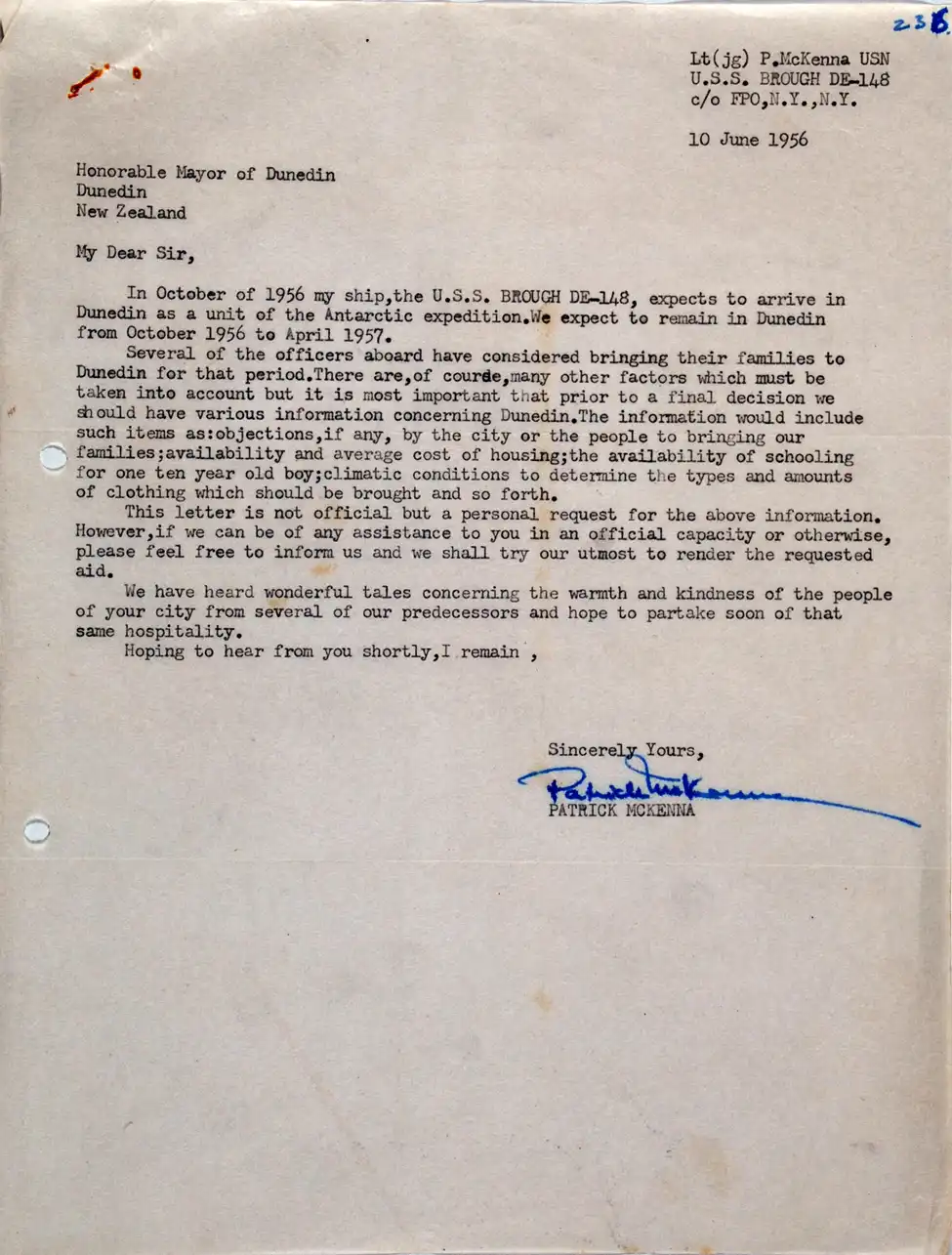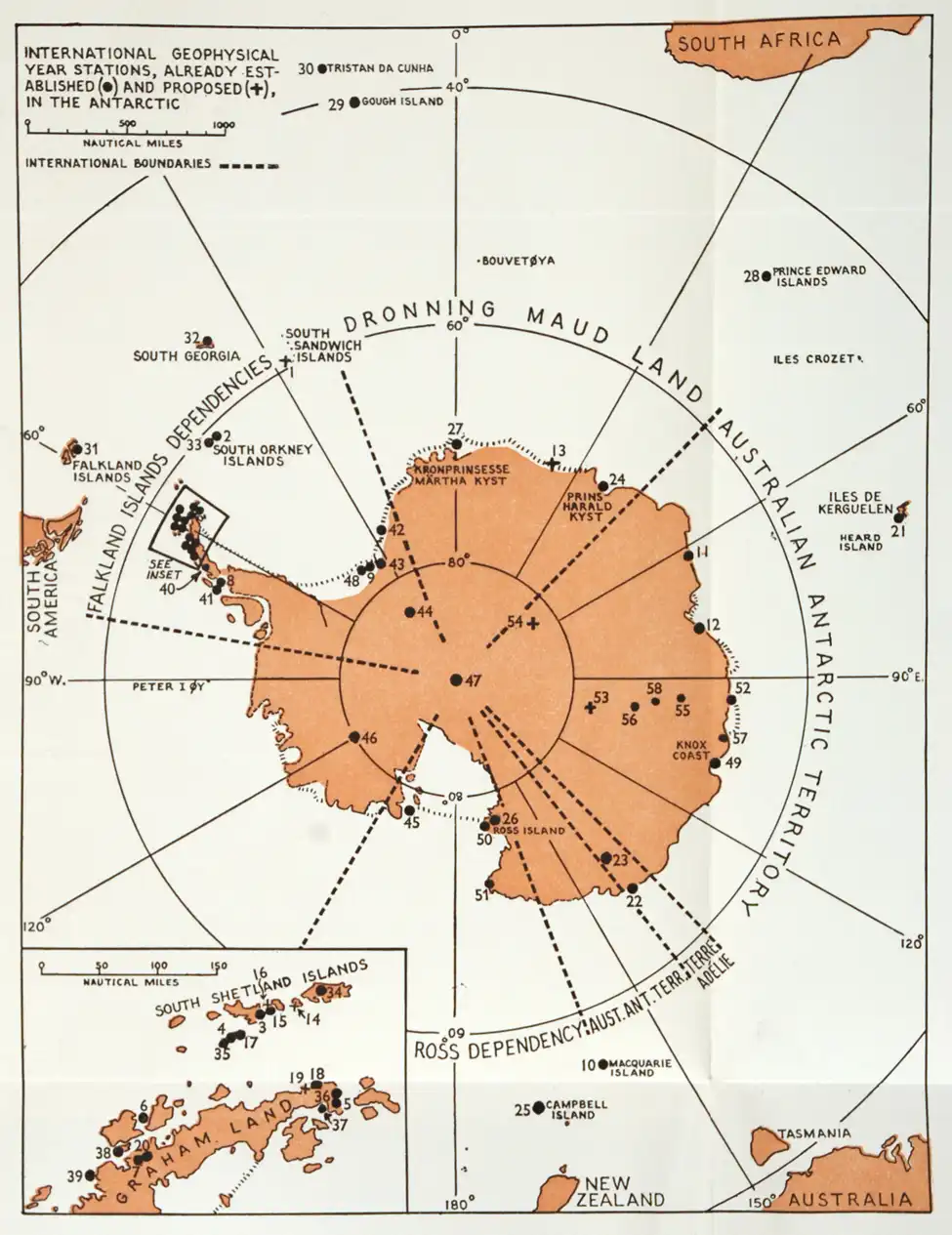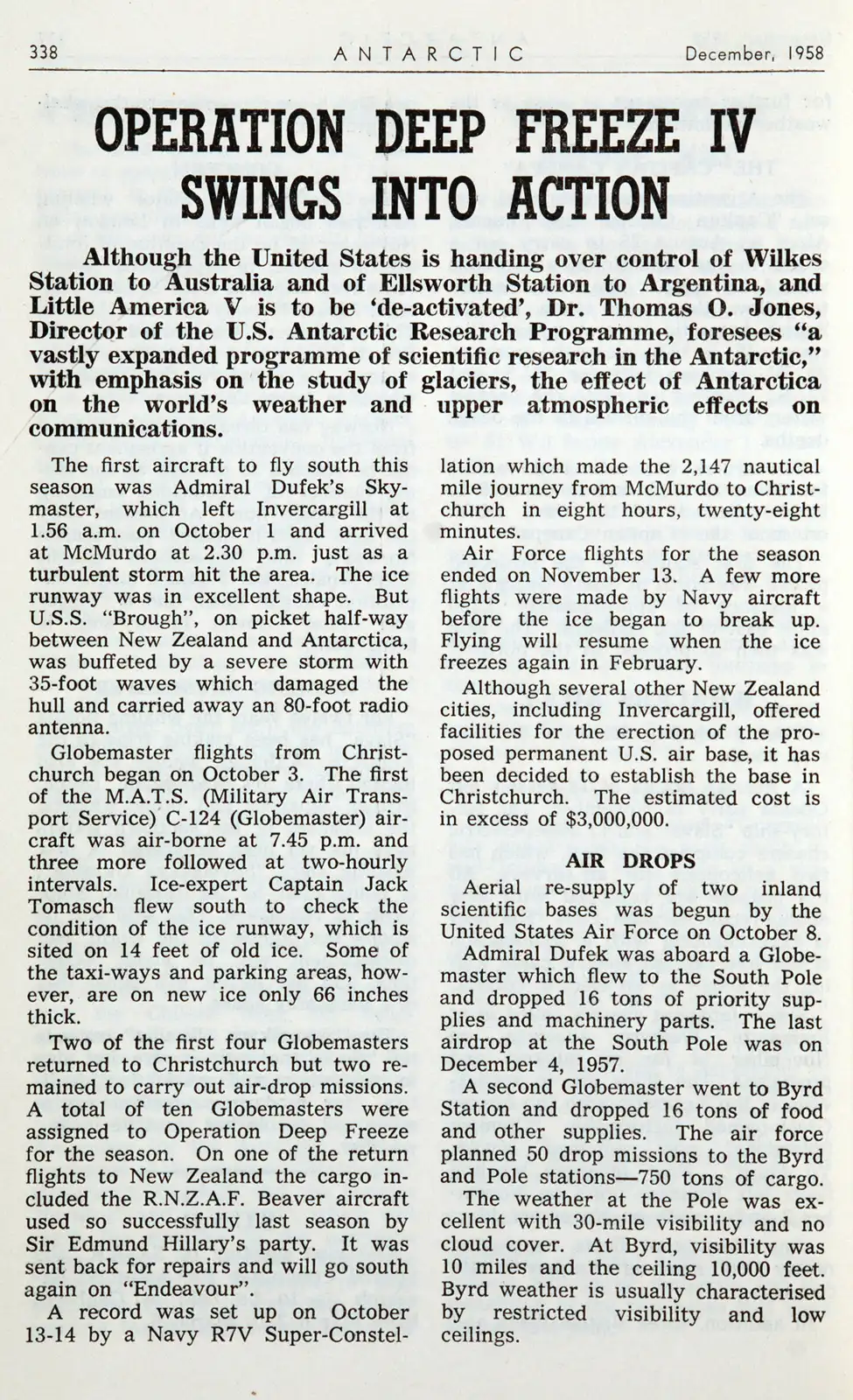Case 23
- Early years of 'Operation Deep Freeze'

Letter. Lt. Patrick McKenna to the Mayor of Dunedin, U.S.S. Brough, New York, 10 June 1956.
U.S.A. Naval Task Force 43, or ‘Operation Deep Freeze’, was a five-year operation in support of the International Geophysical Year activities. The Americans threw huge resources into their new permanent presence on the Antarctic Continent, and the U. S. Navy began flying out of Christchurch to Antarctica.
Flights over some 4,000km of ocean required the United States to use picket ships. These ships were stationed between New Zealand and Antarctica, and aided in communications, weather forecasting, and rescue operations. Lieutenant McKenna of the U.S.S. Broughwrote to the Mayor asking about bringing family members to stay in Dunedin while the ship was on picket. The Brough's165-strong crew became familiar with Dunedin life, as did many other men from later ships.
Letter courtesy of Dunedin City Council Archives.
![Letter. Mayor [L. M. Wright] to Lt. Patrick McKenna, the Octagon, Dunedin, 26 June 1956.](https://www.reedgallery.co.nz/__data/assets/image/0006/279879/Case-23b-Patrick-McKenna.webp)
Letter. Mayor [L. M. Wright] to Lt. Patrick McKenna, the Octagon, Dunedin, 26 June 1956.
Mayor Wright’s reply to McKenna is a summary of details about life in Dunedin.
![George Dufek. <i>Operation Deepfreeze</i>. New York: Harcourt, Brace, [1957].](https://www.reedgallery.co.nz/__data/assets/image/0007/279880/Case-23c-Operation-Deepfreeze-copy.webp)
George Dufek. Operation Deepfreeze. New York: Harcourt, Brace, [1957].
George Dufek (1903–1977), who commanded the United States expedition, was already a seasoned veteran of Antarctica. He was the first American to set foot on the South Pole, flying in by plane. The library’s copy of Operation Deepfreeze is signed by the author.

George (Colin) Bertram. Antarctica Today and Tomorrow. Dunedin: University of Otago, 1957.
G. C. L. (Colin) Bertram (1911–2001) was director of the Scott Polar Research Institute in Cambridge, UK, and William Evans Visiting Professor in Dunedin. A map, accompanying the pamphlet of his 1957 lecture series, shows scientific stations associated with the International Geophysical Year.

Antarctic. December, 1958. Wellington: New Zealand Antarctic Society, 1958
New Zealand Antarctic Society’s news bulletin Antarcticreviewed ‘Operation Deep Freeze’ news at the beginning of the 1958 summer, when the picket ship Brough was damaged during a severe storm.

![Letter. Mayor [L. M. Wright] to Lt. Patrick McKenna, the Octagon, Dunedin, 26 June 1956.](https://www.reedgallery.co.nz/__data/assets/image/0006/279879/Case-23b-Patrick-McKenna.webp)
![George Dufek. <i>Operation Deepfreeze</i>. New York: Harcourt, Brace, [1957].](https://www.reedgallery.co.nz/__data/assets/image/0007/279880/Case-23c-Operation-Deepfreeze-copy.webp)

